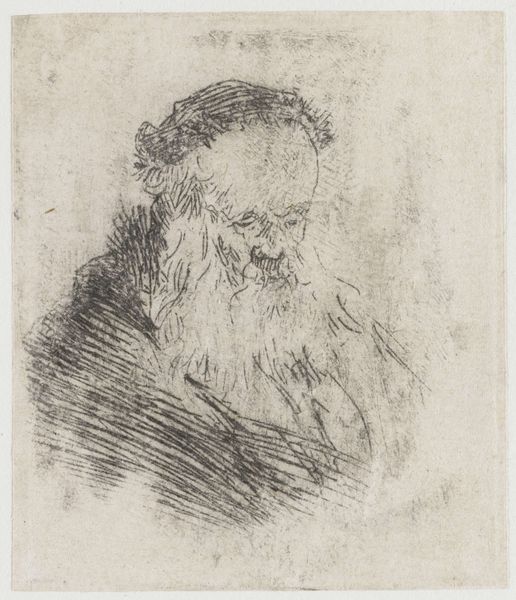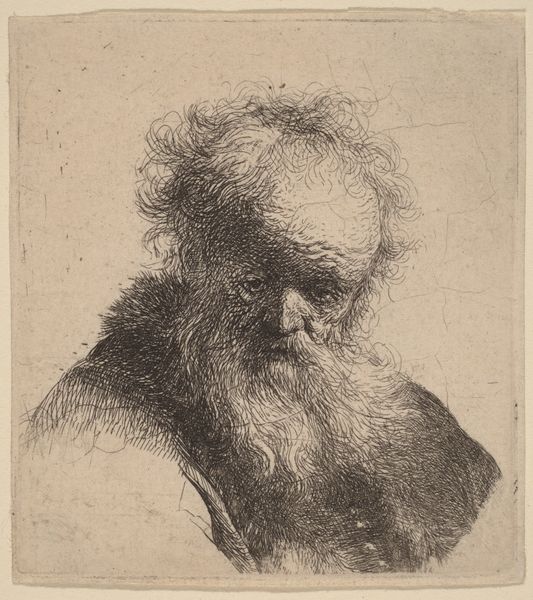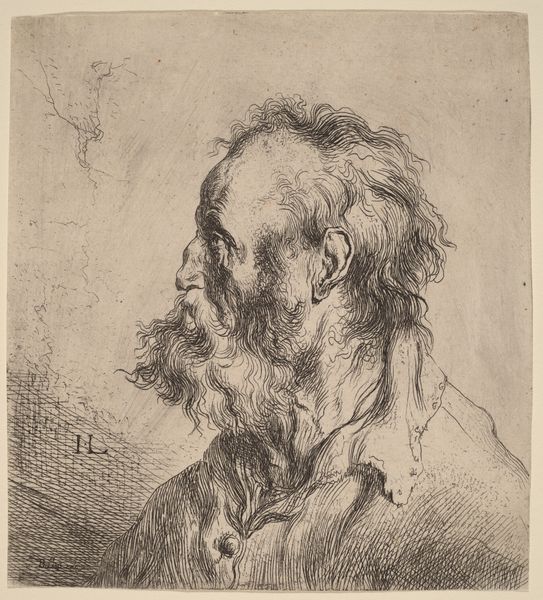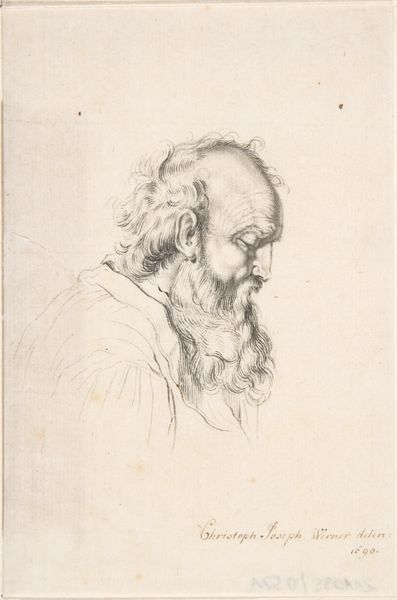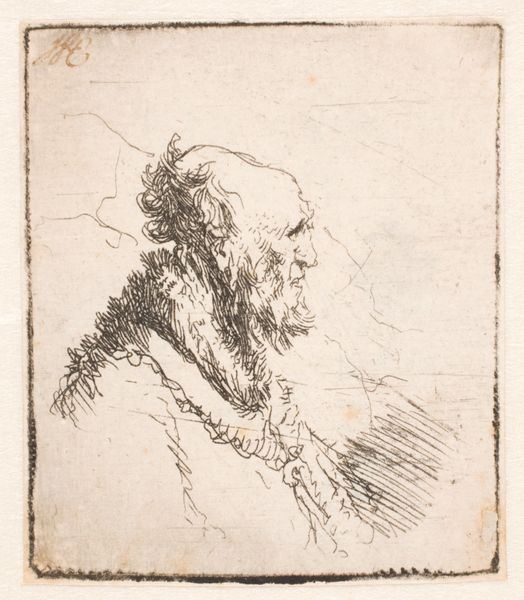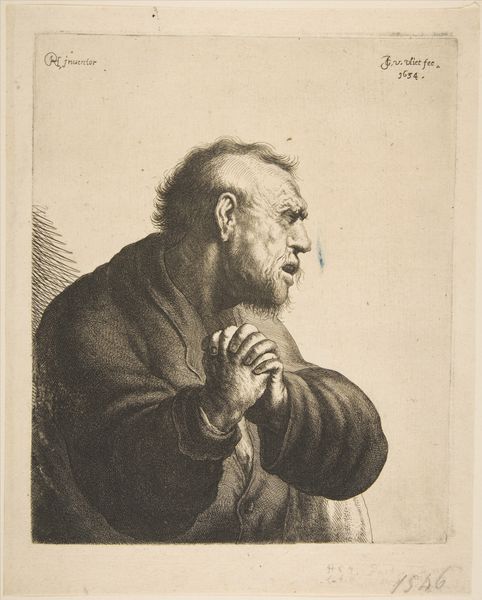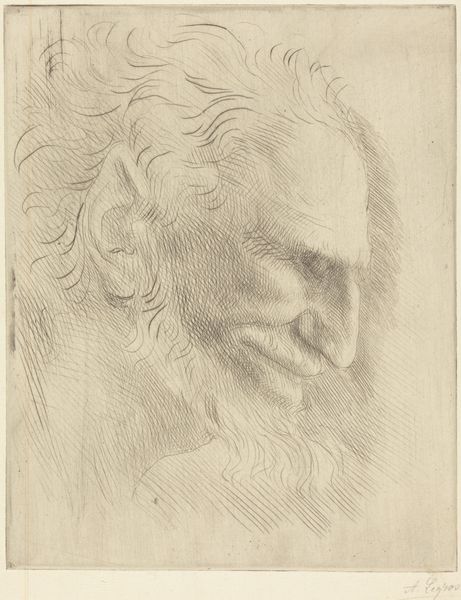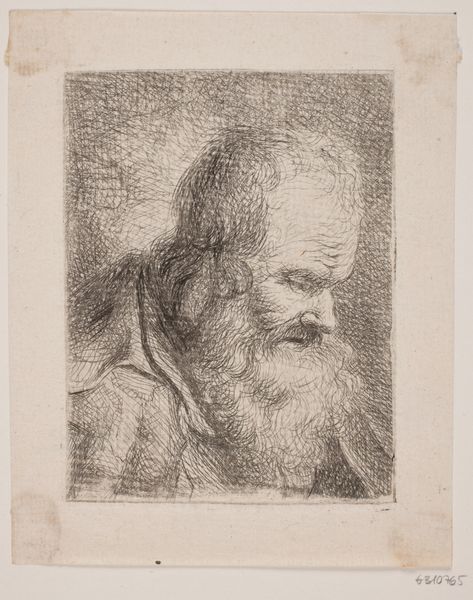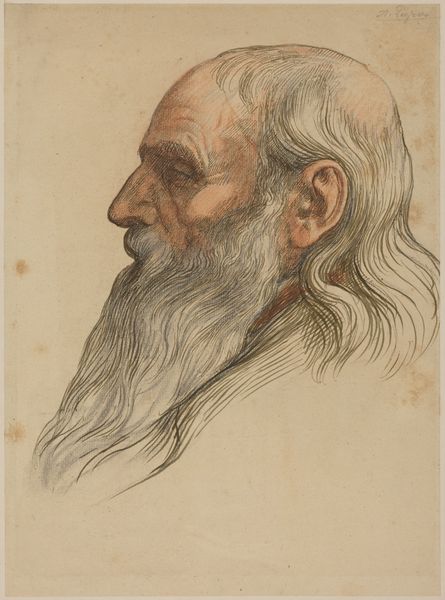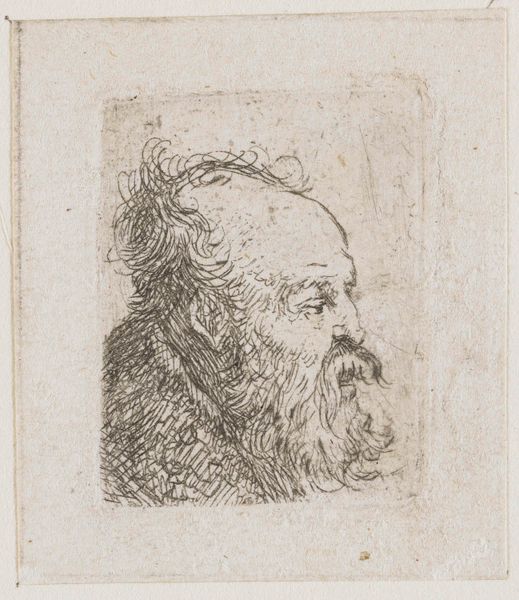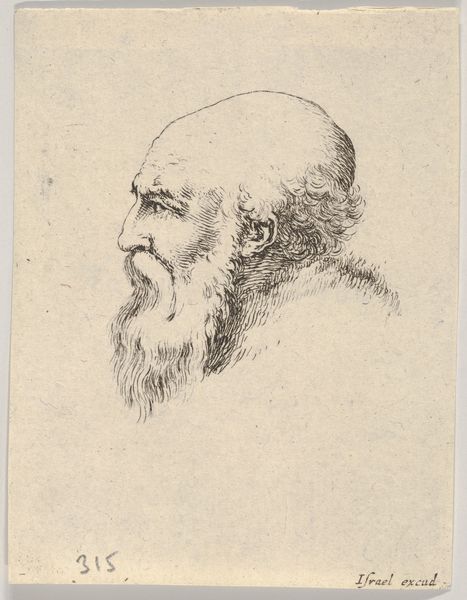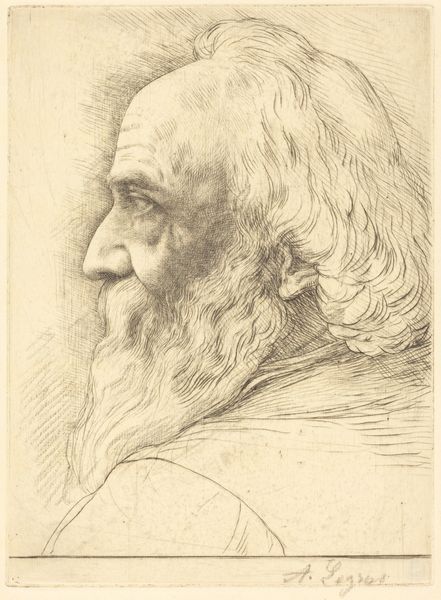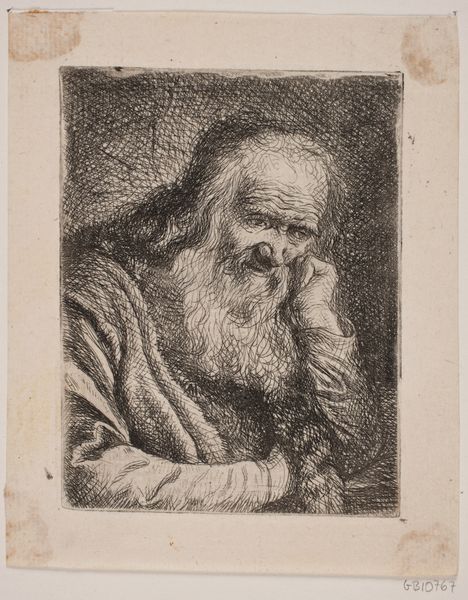
drawing, print, metal, etching
#
portrait
#
drawing
#
baroque
# print
#
metal
#
etching
#
form
#
men
#
portrait drawing
Dimensions: Sheet: 6 7/16 × 5 3/4 in. (16.3 × 14.6 cm)
Copyright: Public Domain
Editor: This is Jan Lievens’ "Bust of an Old Man," an etching done sometime between 1620 and 1674. I’m immediately struck by how raw and unflinching the portrait is. What do you see in this piece, particularly in relation to its time? Curator: The beauty of this work, as you point out, lies in its seeming honesty. However, let’s consider the power dynamics inherent in its creation. Who was typically portrayed, and why? Were older men figures of authority? How does Lievens use the etching medium to perhaps democratize access to portraiture, making it less reliant on wealthy patrons? Consider also how visual culture in the 17th century, specifically within the Baroque period, frequently glorified power structures through idealization. Do you think Lievens' work challenges or reinforces this tendency, and what might that say about his own position within that society? Editor: I see what you mean. While the subject may appear "ordinary," the very act of immortalizing him in art elevates his status. The lines, though, they're not idealized – they reveal age, weariness, and a certain vulnerability. It feels like Lievens is both acknowledging and subverting societal expectations. Curator: Precisely. Think about the social implications of capturing a non-idealized figure, particularly within a patriarchal society that equates age with wisdom and authority, but also possible decline. How could you further examine the nuances of power represented through the composition? What do the dark lines of the etching represent? Editor: Maybe it’s about questioning who deserves to be seen, and what aspects of humanity are deemed worthy of representation. It feels very relevant even today. Curator: Absolutely. This portrait provides an invitation to explore our own preconceptions about beauty, age, and who holds cultural value. Editor: I hadn't considered it from this angle, thinking about power, access and what images mean. Thanks! Curator: My pleasure. Art history is always intertwined with larger societal currents; questioning established norms is part of understanding the full story.
Comments
No comments
Be the first to comment and join the conversation on the ultimate creative platform.
